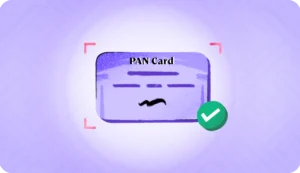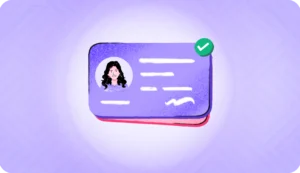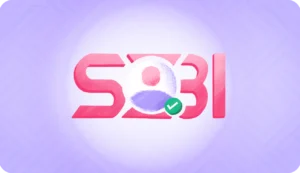The Income Tax Department of India needs to update the income details of each individual so that this information can be tracked for the purposes of verifying tax filing. The PAN card or Permanent Account Number is a 10-digit alphanumeric that has all the employment and other financial information about the individual attached to it. Because of its uniqueness the PAN card can work as a proof of identity in addition to being used for income verification purposes. It is often used by FinTech companies to assess the eligibility of an individual for a loan or any other kind of revolving line of credit. They use a method called KYC for the verification. Such a process helps financial institutions rule out the possibility of fraud, identity theft, money laundering etc. In this article, let us look at how PAN card KYC verification is done, both online and offline.
If you are a salaried individual in India, then you would have a PAN card. Earlier, there used to be a number of incidents where people used to forge a PAN card to assume the identity of another individual. But with the advent of digital KYC, this has almost become non-existent. Today it is compulsory for every Indian to perform a KYC verification and link their PAN with the Aadhaar, the National ID of India to ensure that their online presence is tamper-proof. Before you invest in any financial instruments such as fixed deposits, mutual funds, and other securities, it is necessary that you must have done the PAN card KYC verification. Once your PAN card is verified it helps in two ways. It helps to identify the transactions performed by you and prevents others from misusing your PAN card which is otherwise a physical document.
Some of the other financial transactions that you need PAN card KYC verification are:
- Opening a savings bank account
- Changing signatories or beneficiaries
- Registering a new fixed line, broadband or mobile number
- Opting for credit card or loan
- Opting for a locker in a bank
Documents for PAN card KYC verification
The following are the documents required for both online and offline PAN KYC:
- Proof of identity: Identification documents include a driver’s license, passport, PAN card, bank passbook, and an Aadhaar card.
- Proof of address: Ration card, driver’s license, utility bill, Aadhaar card, and rental agreement serve as evidence of address.
Registering your PAN for KYC for the first time? Are you curious to find out what exactly must be done?
Keep reading, and find out everything about what must be done to do KYC both offline and online.
Read more about PAN card e-signatures here.
There are both online and offline ways to do KYC for a PAN card. The following is an illustration of the several methods of doing KYC for PAN cards, both online and offline:
PAN Card KYC Update Method Available Online
The PAN KYC online path ends up being the least complicated option to finish up the KYC process. You also need to be aware that in order to complete this operation, you will need an Aadhaar card.
To begin, visit the website of SEBI, also known as the Securities and Exchange Board of India, and after logging in, pick the link labeled “Know Your Customer Registration Agency.” After this, you will need to register and complete your profile, following which you will then have to enter the details of your PAN and Aadhaar. After that, you will need to upload a copy of your Aadhaar card that has been self-attested.
After you have finished this, you can move on to the next step, which is to submit the form online. On the mobile number that you registered, you will get a one-time password (OTP). The next step is to validate your account by using this OTP. Take care that you use your mobile number itself to secure the OTP, because it is this number that will then be attached to your Aadhaar and PAN numbers. Also, do not reveal the OTP to anyone else! Note that the number used in the registration process or the KYC can be updated at a later time by visiting one of the government authorized centers for Aadhaar and PAN updation, in person.
Offline Method for PAN card KYC verification
The PAN card KYC verification process can be completed offline in addition to the online PAN card approach, and this is just as credible as doing it online.
To begin, navigate to the Know Your Customer form on the CDSL Ventures website and save it to your computer. Fill in all the required fields, and sign it when you’re done. In addition to this, you are required to affix a copy of your PAN card and a self-attested copy of your proof of address. You may also get the address attested by a third party, though this is not necessary, as you would have to submit a proof of address anyway.
In addition, for the proof of address, you can use any government-issued document, such as a voter ID, passport, or Aadhaar card. A photograph in passport size should be affixed to the application in the space designated for it. After you have finished these procedures, you will need to take the completed form to a bank branch so that the bank employees may physically check the papers and then update the KYC information.
Closing Words
Hope this article was informative and helpful. In your efforts to best identify the documents submitted, HyperVerge’s OCR solution can be a game changer. To support your efforts as a digital lender with PAN card KYC verification, you may also need to perform additional selfie or video verification. This is where HyperVerge can help. HyperVerge is a NIST-ranked face recognition software that is an ace up your sleeve for accurate identification services. Talk to HyperVerge today!
FAQs
Is my PAN card KYC verified?
You can use your date of birth or PAN card to check the status of your KYC. Enter PAN information and other necessary information and submit them. If the KYC has been validated, the status will be MF-Verified by CVLMF. If the KYC is not verified, the status will be ‘Pending.’
How long does it take for KYC verification?
It takes 10-15 days for KYC verification and registration with the KRA.
What are the four components of KYC according to the RBI?
The four components of KYC according to RBI are: 1. Customer Acceptance Policy – Describes what policy is followed for registering the customer 2. Customer Identification Procedures – Describes what procedures to follow for identification 3. Monitoring of Transactions – Describes how the transactions are monitored 4. Risk Management – Describes how to manage customer credit risk
Who can verify KYC documents?
The following can verify your KYC: 1. Post office personnel 2. Bank officials 3. Councillor 4. Accountant 5. Solicitor 6. Doctor





